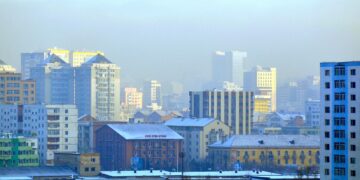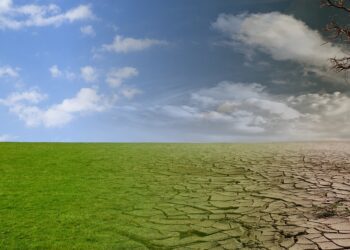Toxic Trails: How Pollution Degrades Ecosystems
Pollution remains one of the most formidable enemies of natural ecosystems. The continuous release of harmful substances into the environment leads to a phenomenon known as “toxic trails”, which severely disrupt the balance of natural ecosystems and contribute to a decline in biodiversity. In this comprehensive examination, we will delve into the types of pollution affecting ecosystems, their impacts, and explore the steps communities can take to mitigate their destructive path.
Understanding Toxic Trails in Ecosystems
Toxic trails can be classified into various types including air, water, soil, and noise pollution. Each type has distinct sources and unique impacts on the environment:
- Air Pollution: Emitted from industrial activities, vehicle exhaust, and agricultural practices, air pollution can lead to acid rain which severely affects water and soil quality.
- Water Pollution: This includes runoff of pesticides and fertilizers, industrial discharges, and untreated sewage that lead to eutrophication and loss of aquatic life.
- Soil Pollution: Contamination by heavy metals and hazardous waste can render soil infertile and toxic to plants and the animals that rely on them.
- Noise Pollution: Predominantly caused by urbanization and industrial activities, noise pollution disrupts wildlife communication and breeding patterns.
Impact of Pollution on Ecosystems
The effects of pollution are extensive and primarily manifest in the degradation of animal and plant life, water quality, and soil health:
- Biodiversity Loss: Toxic substances can directly kill species or disrupt their lifecycle and reproductive patterns, leading to a decrease in biodiversity.
- Water Quality Degradation: Pollutants in water bodies can lead to hypoxic zones where oxygen levels are too low to support most marine life.
- Soil Degradation: Accumulation of pollutants like heavy metals in soil can alter its chemical balance, making it less fertile and harmful for plants.
- Health Impacts on Wildlife: Exposure to pollutants can cause a range of health issues in wildlife, including hormonal imbalances, reproductive failures, and even death.
Case Studies of Pollution Impact
To clearly illustrate the toxic trails left by pollution, let’s explore some affected areas:
- The Great Barrier Reef: Agricultural runoff containing pesticides and fertilizers has contributed significantly to coral bleaching and diseases affecting this delicate ecosystem.
- Chernobyl Exclusion Zone: The notorious nuclear accident led to long-term soil and water contamination, rendering large areas uninhabitable to most forms of life.
- The Ganges River: Heavily polluted by chemical waste and untreated sewage, the river illustrates acute water pollution stress on aquatic life and the communities depending on it.
Tackling the Issue: Mitigation and Restoration Efforts
Global and community-level efforts are vital in countering the effects of toxic trails. Effective strategies include:
- Pollution Prevention Policies: Implementation of stricter regulations and incentives for reducing emissions and discharges by industries and agricultural activities.
- Restoration Projects: Efforts to rehabilitate contaminated soils, cleanse water bodies, and restore habitats crucial for biodiversity conservation.
- Public Awareness and Education: Empowering communities through education about the impacts of pollution and promoting engagement in local conservation efforts.
- Technological Innovations: Developing and adopting cleaner technologies and renewable energy sources to minimize environmental footprints.
Common Questions About Pollution and Ecosystems
What are the long-term effects of pollution on ecosystems?
Long-term pollution can lead to irreversible environmental changes, loss of biodiversity, and disturbances in the balance of natural ecosystems which can take decades to recover.
How can individuals help reduce pollution?
Individuals can contribute by minimizing waste, using eco-friendly products, participating in local clean-up drives, and advocating for policies promoting sustainability.
What role do governments play in controlling pollution?
Governments are critical in setting environmental standards, enforcing laws, funding research on pollution control, and fostering international collaborations for environmental protection.
Conclusion
The toxic trails left by pollution are a daunting challenge to global ecosystems and biodiversity. While the problem is complex, understanding its dynamics allows for better preparedness and responsiveness. With combined efforts from governments, communities, and individuals, we can forge a path to a cleaner, more sustainable environment that supports both nature and human wellbeing.










